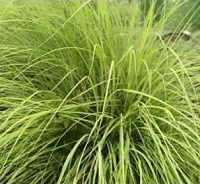Chemical composition and antimicrobial activity of the essential oil of Desmostachya bipinnata linn.
Keywords:
Desmostachya bipinnata, Essential oil, Antimicrobial activity, GC-MSAbstract
The present study describes the phytochemical profile and antibacterial activity of Desmostachya bipinnata. The sample of essential oil was obtained from the aerial parts of the plant by hydrodistillation and analyzed by GC–MS. From the 16 compounds representing 99.97% of the oils: camphene (16.79%), isobornyl acetate (9.92%), tricyclene (4.30%), (+,-) trans-2,6-gamma-Irone (2.21%), Caryophyllene diepoxide (12.29%) , β-eudesmol (11.16%) Eseroline (25.15%) and Calarene (3.48%) appear as the main components. The oil also contained smaller percentages of Diphenyliodinium bromide, 1.limenone, 2-cyclohexene-1-one and 8-nitro-12-tridecanolide. Furthermore, an antibacterial study of the oil was evaluated using agar diffusion and broth dilution methods. The antibacterial studies showed that the oil had significant inhibitory effect against all four bacteria strains included in the study. Results, suggest potential antibacterial activity of the essential oil of Desmostachya bipinnata, which may find its application in future research for the therapy, food and pharmaceutical industry.
References
http://www.botanical.com/site/column_poudhi
a/116_janjgir.html
Burt SA. Essential oils: their antibacterial
properties and potential applications in Foods:
a review. Inter J Food Microbiolgy. 2004;94:
-25
Prudent D, Perineau F, Bessiere JM, Michel
GM, Baccou JC. Analysis of the essential oil
of wild oregano from Martinique (Coleus
aromaticus Benth.)- evaluation of its
bacteriostatic and fungistatic properties. J
Essen Oil Res.1995;7:165-173.
Delaquis PJ, Stanich K, Girard B, Mazza G.
Antimicrobial activity of individual and
mixed fractions of dill, cilantro, coriander and
eucalyptus essential oils. Inter J Food
Microbiol.2002; 74: 10-109.
http://www.cosmicjoy.com/product_phytoche
mistry.html
Darokar MP, Mathur A, Dwivedi S, Bhalla R,
Khanuja SPS, Kumar S. Detection of
antibacterial activity in the floral petals of
some higher plants. Curr Sci 1998; 75: 187.
Iauk L, Ragusa S, Rapisarda A, Franco S,
Nicolosi VM. In vitro antimicrobial activity
of Pistacia lentiscus L. extracts: Preliminary
report. J. Chemother.1996; 8: 207–209.
Koutsoudaki C, Krsek M, Rodger A.
Chemical Composition and Antibacterial
Activity of the Essential Oil and the Gum of
Pistacia lentiscus Var. chia J. Agric. Food
Chem. 2005; 53(20): 7681–7685.
Ozçelik B, Aslan M, Orhan I, Karaoglu T.
Antibacterial, antifungal, and antiviral
activities of the lipophylic extracts of Pistacia
vera. Microbiol. Res.2005; 160:159–164
Kamrani YY, Amanlou M, Esmaeelian B,
Bidhendi MS, SahebJamei M. Inhibitory
Effects of a Flavonoid-Rich Extract of
Pistacia vera Hull on Growth and Acid
Production of Bacteria Involved in Dental
Plaque. Int. J.Pharmacol.2007;3: 219–226.
Benhammou N, Bekkara AF, Panovska KT.
Antioxidant and antimicrobial activities of
the Pistacia lentiscus and Pistacia atlantica
extracts .Afri. J. Pharm. Pharmacol. 2008;
:22–28.
Glowniak P, Łos R, Skalicka-Wozniak K,
Widelski J, Burczyk J, Malm A. Activity of
Crithmum maritimum L. (Apiaceae) against
Gram-positive bacteria. XIX 2006 (2)17.
Annales universitatis Mariae Curie -
Skłodowska . Polonia.
Bagamboula CF, Uyttendaele M, Candan F,
Daferera D, Unli GV, Polissiou M, Sokmen
A. Antimicrobial and antioxidative activities
of the essential oils and methanol extracts of
S. cryptanha and S. multicaulis (Vahl.). Food
Chem.2004; 84:519–525.
Canillac N, Mourey A. Antimicrobial activity
of the essential oil of Picea excelsa on
Listeria, Staphylococcus aureus and coliform
bacteria. Food Microbiol.2000; 18: 261–268.
Dermetzos C, Perdetzoglou DK. Composition
and antimicrobial studies of the essential oils
of Origanum calcaratum Juss. and O.scabrum
Boiss. J. Essent. Oil Res. 2001; 3:460–462.
Vaara M. Agents that increases the
permeability of the outer membrane.
Microbiol. Rev. 1992; 56:395–411.
Malekzadeh F. An antimicrobial compound in
two Pistacia species. Mycopathologia. 1974;
: 73–77.
Yalpani M, Tyman JHP.Long-chain phenols.
The phenolic acids of Pistacia vera.
Phytochemisrty.1983; 22:2263–2266.
Conner DE, Beuchat LR. Sensitivity of heatstressed yeasts to essential oils of Plants.
Appl. Environ. Microbiol. 1984; 47:229–233.
Marner FJ, Freyer A, Lex J. Triterpenoids
from gum mastic, the resin of Pistacia
lentiscus. Phytochemistry1991;30:3709–3712.
Kubo I, Muroi H, Kubo A. Antimicrobial
activity of long-chain alcohol’s against
Streptococcus mutants. J. Agric. Food. Chem.
; 48: 2143–2145.
Ben Douissa F, Hayder N, Chekir-Ghedira L,
Hammami M, Ghedira K, Mariotte AM,
Dijoux-Franca MG. New study of the
essential oil from leaves of Pistacia lentiscus
L. (Anacardiaceae) from Tunisia. Flavour
Fragrance J. 2005; 20: 410–414.



